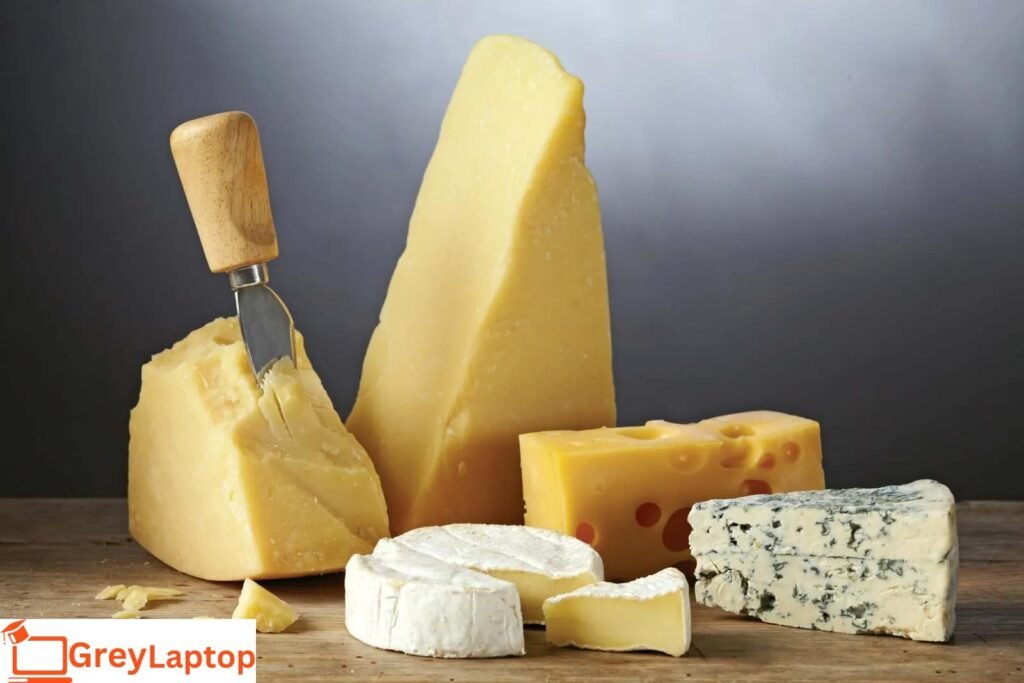Cheese named for an English village is more than just food; it is a subculture that tells a story of information, lifestyle and community. This unique form of cheese is loved by many for its specific taste and the way it connects human beings with the chosen region. In this newsletter, we explore the rich lifestyle of a cheese named after an English village, its history, how it’s made and why it remains so famous in recent times.
The history of a Cheese named for an English village
Cheese named for an English village, the cheese has a long and fascinating history. Many of these cheeses have been made for centuries using conventional strategies passed down from generation to generation. The practice of naming the cheese after the village where the miles were made was started as a way to identify where the cheese came from. This helped people understand where the cheese came from and often indicated what a great form of cheese they could rely on.
In many English villages, cheese making has become a community interest. Families could come together to provide cheese and share strategies and recipes. This sense of community remains a gift even today in the villages where these cheeses are made. The cheese way of life Cheese named for an English village is a testament to the talent and will of these communities.

Types of Cheese named for an English village
There are many excellent cheeses named after English villages, each with its own unique off-the-shelf flavor and proclivities. Among the most famous are Cheddar, Stilton and Red Leicester. Let’s take a closer look at the delicious cheeses.
Cheddar
Cheddar is perhaps the most famous Cheese named for an English village. He is from the village of Cheddar in Somerset. Cheddar cheese is known for its healthy, sharp taste and corporate structure. It ages regularly for several months to develop its wonderful taste. Cheddar cheese can range in color from white to dark orange depending on the type of milk used and the ripening method.
Stilton
Stilton is every other famous Cheese named for an English village. He is from the village of Stilton in Cambridgeshire. Stilton cheese is a blue cheese with a firm, spicy taste and a crumbly texture. It is produced using a specific mold shape that creates blue veins in the cheese in several stages. Stilton is regularly gifted with biscuits and fruit and at some point in the holiday season it is a favorite for miles around.
Red Leicester
Red Leicester is a Cheese named for an English village in Leicestershire. This cheese is thought for its vibrant orange shade and slight nutty taste. Red Leicester has a light texture and is often utilized in cooking, similarly to being cherished on its very own. The extraordinary Red Leicester color comes from the addition of annatto, a natural dye.
Cheese making process
The process of making a Cheese named for an English village is both a work of art and a science. It involves several steps, each of which requires careful attention to detail. The satisfaction with the milk, the specific techniques used and the maturation system contribute to the very last product.
Milk
The first step in making a Cheese named for an English village is getting the best milk. The shape of milk used may additionally range depending on the cheese being produced. For example, cheddar is generally made from cow’s milk, at the same time as a few different USA cheeses may additionally use sheep’s or goat’s milk. Milk is usually sourced from close by farms, making sure nearby is fine.
Curing
Once the milk is collected, it is much more heated and mixed with the starter lifestyle. This allows the milk to begin curdling. Rennet, a plant enzyme, is then added to similarly thicken the milk and separate it into curds and whey. The rennet is the solid part that becomes the cheese, while the whey is the liquid that is drained off.
Slicing and cooking cottage cheese
The curd is then cut into smaller pieces and heated to help get rid of the excess whey. This step is important to establish the structure of the cheese. For example, cheddar cheese is ground into small cubes and cooked at a better temperature to create a firm texture. The curd is constantly stirred during this system to ensure even heating.
Draining and pressing
After cooking, the curds are tired of any perfect whey and placed in molds. The curd is then pressed to remove excess moisture and mold the cheese into its final shape. The amount of stress and length of pressing may vary depending on the type of cheese being produced. For example, Cheddar cheese is pressed for many hours to create a dense, organized texture.
Aging
The very last step in making a Cheese named for an English village is getting older. The cheese is saved in a humid environment to permit it to mature. The ripening technique can take anywhere from a few weeks to a few years, depending on the desired taste and texture. As it ages, the cheese develops its unique characteristics, inclusive of the sharpness of cheddar or the blue veins of Stilton.

The meaning of tradition
The subculture of Cheese named for an English village is critical for many reasons. It preserves the historical past and subculture of the villages in which these cheeses are produced. It also supports neighboring economies by providing jobs and tourism sales. Visitors often visit these villages to taste the cheese and study the cheese-making system.
Plus, the cheese’s way of life, Cheese named for an English village, ensures that these unique tastes and strategies are passed down through fateful generations. It’s a way to keep that world alive while adapting to fashion tastes and choices.
Cheese festivals and events
Many of the Cheese named for an English village have annual markets and opportunities to revel in their cheese-making history. These activities are an exceptional way for people to learn about cheeses and taste their distinctive varieties. They also provide an opportunity for local producers to display their wares and connect with clients.
For example, the village of Cheddar hosts a cheese show each year where traffic can sample exceptional varieties of Cheddar cheese and study the region’s cheese-making record. Similarly, Stilton Village’s Stilton Cheese Rolling event is a fun and special way to celebrate the famous blue cheese.
Modern innovation
While the Cheese named for an English village is steeped in history, modern improvements have also played a role in its continued success. The advancement of the era and the technological know-how advanced the cheese making process with regard to extra consistency and smoothness. For example, modern cooling techniques ensure that the milk remains sparkling, and precise temperature controls at a particular point in curdling and cooking help to obtain the desired texture and flavor.
Additionally, many cheese makers actually use sustainable practices to reduce their impact on the environment. This consists of using renewable energy sources, reducing waste and sourcing milk from farms that follow ethical and sustainable practices. These cutting-edge innovations help ensure that the Cheese named for an English village is sustained for many years to come.

You are enjoying a Cheese named for an English village
Cheese named for an English village is used in many unique ways. It can be eaten alone, used in cooking or paired with other food and drink. Here are some ideas to enjoy these delicious cheeses:
Cheese boards
Creating a cheese board is a fantastic way to experience a Cheese named for an English village. You can consist of many cheeses, together with Cheddar, Stilton and Red Leicester, along with crackers, fruit and nuts. This is an ideal choice for great guests or for a special offer in the home.
Cooking with cheese
Named for an English village, the cheese also can be used in cooking to add flavor and richness to dishes. Cheddar cheese is a famous yearning for mac and cheese, grilled cheese sandwiches, and gooey casseroles. Stilton can be utilized in salads, soups and sauces to offer it a formidable, highly spiced flavor. Red Leicester is perfect for pies, cakes and quiches.
Pairing with drinks
Cheese named for an English village, the cheese goes well with many drinks. Sharp cheddar pairs well with fresh cider or strong red wine. The robust taste of Stilton pairs beautifully with sweet dessert wines or port. The delicate nutty flavor of Red Leicester enhances a fine beer or a fruity white wine.
More: Reddit
Conclusion
Cheese named for an English village is more than just a delicious food; it’s far a way of existence that connects us to the facts, the lifestyle and the community of the villages in which those cheeses are made. From the wealthy, sharp taste of Cheddar to the savory, crumbly texture of Stilton, each cheese tells a very precise story. The method of creating a Cheese named for an English village is a testament to the skill and backbone of the cheesemakers who need to hold this delicious way of needed.
As we savor these delicious cheeses, we can appreciate the rich records and cultural background they form. Whether you’re growing a cheese board, cooking a cheese dish or pairing the cheese with your favorite drink, a Cheese named for an English village offers a beautiful taste of tradition. By supporting these traditional cheese makers, we help ensure that this delicious subculture returns for generations.



